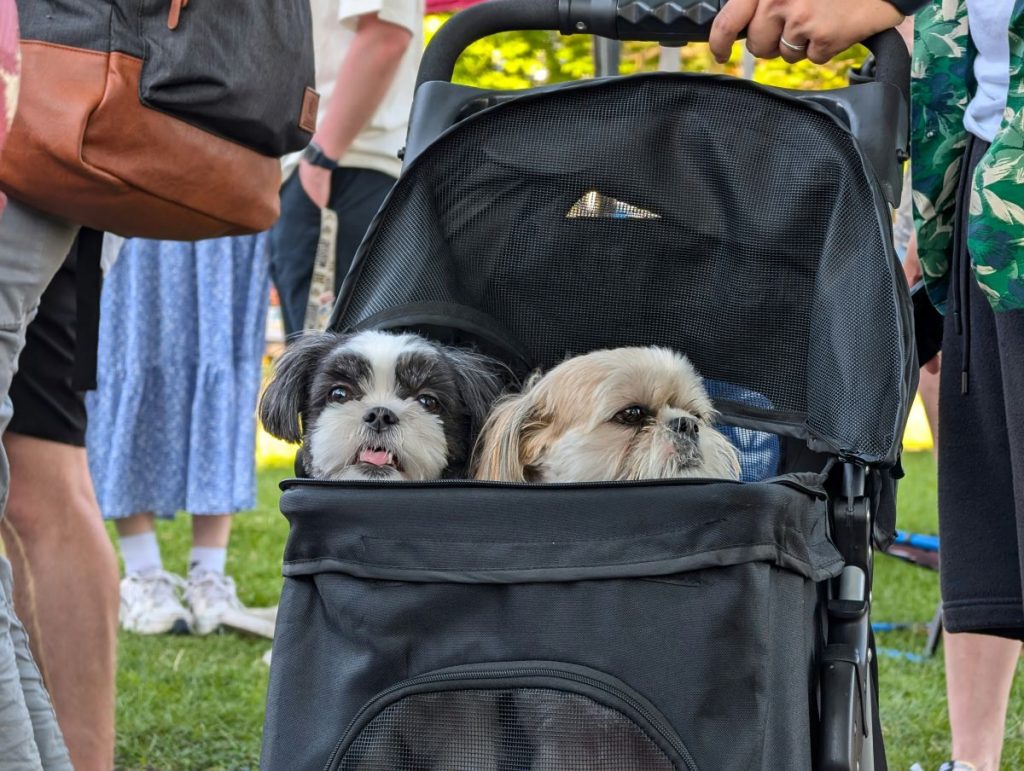In South Korea, a country with one of the lowest fertility rates in the world and where the demographic crisis has been elevated to the category of “national emergency,” the sale of strollers has become a huge business. It may sound contradictory, but the key is who these strollers, which can cost hundreds or even thousands of euros, are designed for. Inside are not newborn babies, increasingly difficult to see on the streets of South Korea, but dogs. The sector has changed to such an extent that in 2023, more strollers were sold for pets than for children.
And that tells us a lot about their demographics.
Change in the World of Strollers
2023 was a special year for stroller sellers in South Korea. For the first time, they sold more models for dogs and cats than for babies. More precisely, Gmarket calculates that the former represented 57% of all sales channeled through its website between January and September. Units for children accounted for the remaining 43%. Not bad considering that a few years ago, in 2021, strollers designed for dogs and cats represented 33% of total units sold.
The Wall Street Journal specifies that sales of dog strollers have quadrupled since 2019, and there are models that exceed a thousand dollars. It even mentions a company that started manufacturing baby strollers and in recent years, in view of the market trend and declining birth rates, has decided to refocus its South Korean subsidiary to exclusively dedicate it to the dog stroller sector. “You can put your dog or baby in our strollers,” they comment, “but the market here demands pet strollers.”
A Fleeting Phenomenon?
It doesn’t seem so. First, because pet strollers have been gaining market share over those manufactured for babies for several years now. Second, because stroller stores are not the only ones that have noticed the cyclical change revealing a greater weight of the economy revolving around pets than that focused on babies. In June, The Korea Times echoed Gmarket data revealing that more pet food is sold than baby food, a trend the platform has been observing since 2021.
Moreover, the pet food market would outpace that of human newborns resoundingly, by a margin of more than ten percentage points.

An Example: Seoul’s Figures
The trend and balance of market shares may seem striking, but they are nothing more than reflections of a more complex reality: South Korea’s difficult demographics. Seoul provides a rather illustrative example. In 2023, the number of dogs registered with the Seoul Metropolitan Government amounted to 622,000, more than the 594,000 babies born in the city between 2014 and 2023. And no, it’s not a phenomenon exclusive to the capital.
While the country sees its birth rate plummet, moving further and further away from the 2.1 births per woman that mark the “replacement rate,” the number of pets is growing at a good pace. The Rural Economic Institute calculates that in 2010, 17.4% of the population had dogs, cats, or some other pet. In 2020, it was already 27.7%, and their forecasts were for the percentage to be around 30% of the total population in 2023, which would mean almost 15 million people throughout the country.
A Lucrative Business
More pets and fewer households facing the expenses of raising children translates into better prospects for the increasingly lucrative pet care business. The Korea Times cites estimates that over the next few years it will grow to reach six trillion won by 2027, equivalent to 4 billion euros. In 2023, it was around 2.7 billion. In 2022, it calculates that there were already pets in 5.5 million households, which translates to around 12 million people.
And the Birth Rate?
At the opposite pole. World Bank data shows that South Korea’s crude birth rate has been plummeting for years, with five live baby births per thousand people in 2022. Ten years earlier, there were ten births. In the early 1990s, the figure approached 20, and in the 1960s, it was above 40 births per thousand inhabitants.
Another equally dire indicator is the fertility rate, which estimates the number of births a woman is expected to have over her lifetime. Although South Korea has been below 2.1 for decades, in recent years the indicator is closer to the base of the horizontal axis. In 2022, it was 0.8.
Last year it was already at 0.72, a historic low. Such figures have been accompanied by growing fear of how the birth rate collapse will affect the nation’s economy and defense. Especially because the policies adopted by the government have so far failed to incentivize the birth rate.

“I’d Rather Spend It on My Dog”
Recently, Kang Seung-min, a young woman walking a poodle in a stroller through a park in Seoul, used those words to explain to the Wall Street Journal how she sees her future: at 24, she doesn’t plan to get married or become a mother. “I’d rather spend money on my dog.” The U.S. newspaper asserts that the presence of pet strollers on the streets with the demographic crisis as a backdrop has fully entered the public debate in South Korea.
At the beginning of the year, a national broadcaster even devoted a section to the “heated debate,” and in 2023, the current Minister of Labor, Kim Moon-soo, also expressed his concern: “What worries me is that young people don’t love each other. Instead, they love their dogs and carry them with them. They don’t get married and they don’t have children.” The outlook shows no signs of changing. A recent survey shows that one out of every two South Korean women between the ages of 20 and 49 does not plan to have children.




